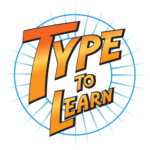In 2016, 10% of students in grades K-12 were reported to be English Language Learners (ELL), students whose native language is not English. Projections say that by the year 2025 that number will have grown to 25% of students, meaning that 1 in 4 students will be learning English while attending grade school. In order to properly serve all students in the education system, effective language learning techniques and curriculum are essential. Federal law requires that ELL students be empowered to “participate meaningfully and equally in educational programs.” The question is, what tools are necessary to make this requirement a reality?
Confused by the ELL/ESL terminology? Read the Difference Between ELL and ESL here.
It can take students between 4 and 7 years to become fluent in a second language. Seven years is almost half of their grade school education! In order for students to become properly fluent in English while receiving a quality education, it is not sufficient to simply pull students into a daily, hour-long English lesson and then send them back to their regular class. Language skills should be integrated across all subjects, and with technology becoming a staple in the classroom, ESL capabilities should be accessible in that medium as well.
Digital resources are incredibly important in the modern classroom. The list of benefits is endless for students at all levels, but they are particularly beneficial for ELL learners. Educational computer programs and applications incorporate images, audio, hands-on activities, and repetition to accommodate multiple learning styles. When using ESL support, it can assist students in forming connections between words and pictures. It also allows students to go at their own pace without being left behind by the rate of the rest of the class.
More and more educational programs are including ELL support as a feature. It is a highly effective way to provide comprehensive, effective language learning. These programs are used to teach everything: math, reading, computer skills, and more. When ELL support is incorporated into these different subjects, students develop a vocabulary outside of traditional concepts taught in a basic English class. The additional vocabulary learned outside of ESL classes will accelerate English language development in addition to increasing comprehension during non-ESL classes.
Type to Learn is an example of how English Language Learning can easily be incorporated into any subject. Type to Learn is a cloud-based keyboarding proficiency program designed to align with local, state, and CCSS standards for typing. ELL students should not be excluded from this essential part of their education, and with Type to Learn, they are not. Type to Learn includes text support throughout the program for English and Spanish. When the Spanish ESL setting is active, a student can scroll the cursor over a button or text and it will automatically be translated into Spanish. Spanish translation is provided for all buttons, navigation, instructions, reminders, and congratulatory payoffs. This supports students in comprehension while still completing the tasks and improving their English skills, no matter what they are doing.
There is a significant amount of funding and grant money available for schools who want to incorporate ESL supported programs in their classrooms. This includes programs that provide all the benefits of digital learning to traditional students and ELL students alike. The US Department of Education has a page on their website detailing federal funding for ELL. Other organizations like the Carnegie Corporation of New York and TESOL International Association offer various education grants. Take a look at your state’s available funding and don’t hesitate to take advantage of the resources available to provide ELL students with Type to Learn and the exceptional education they deserve.





